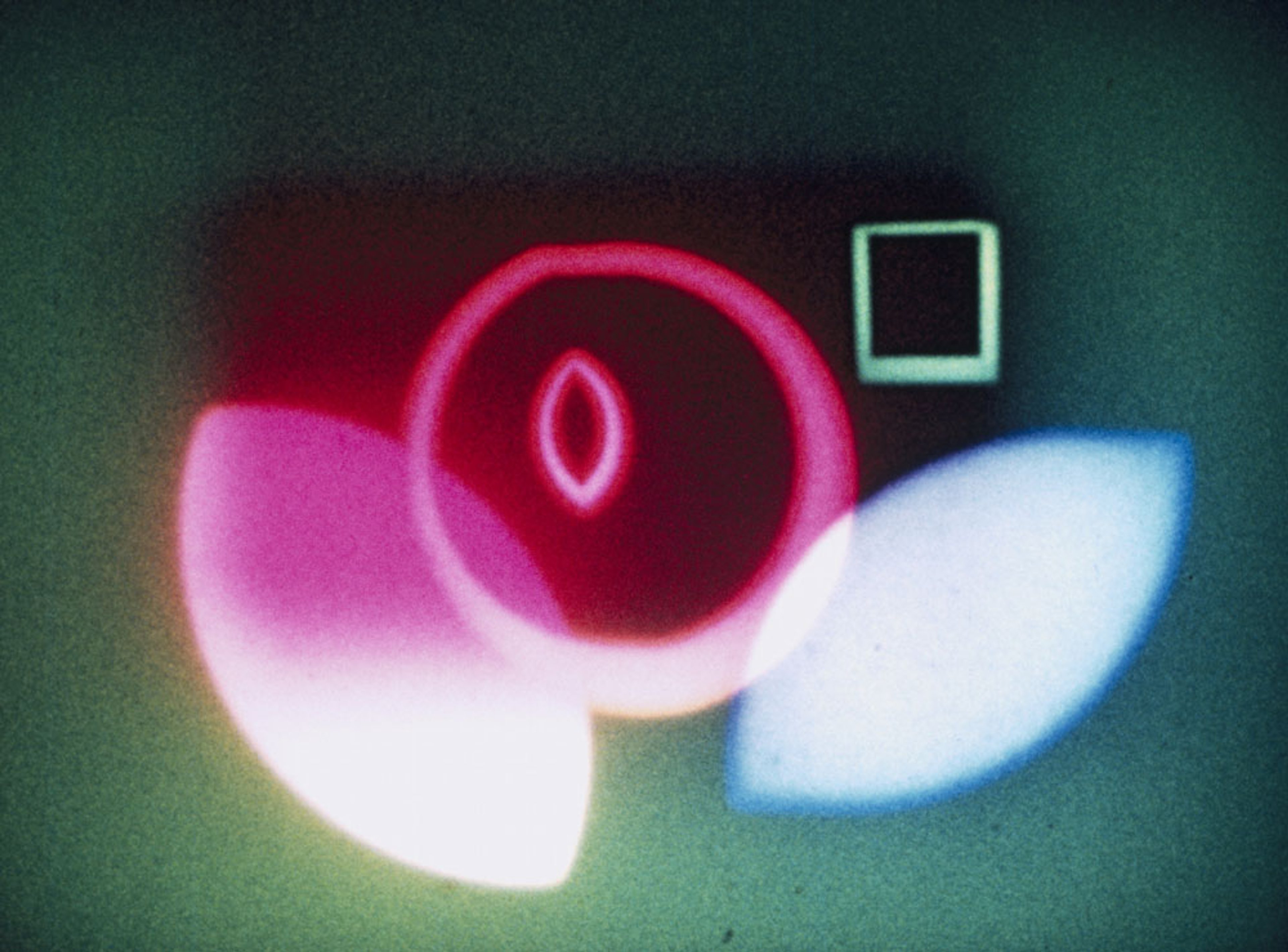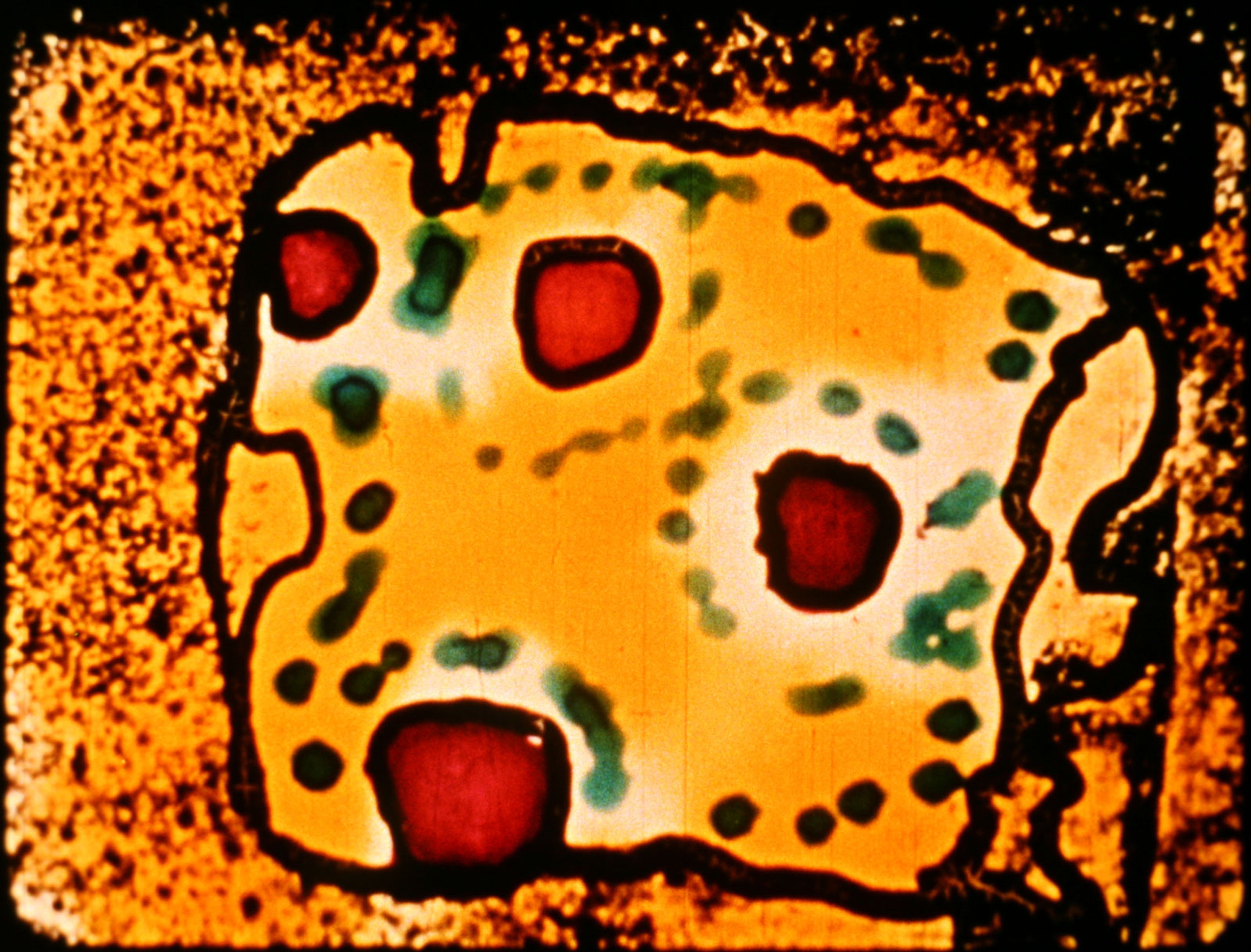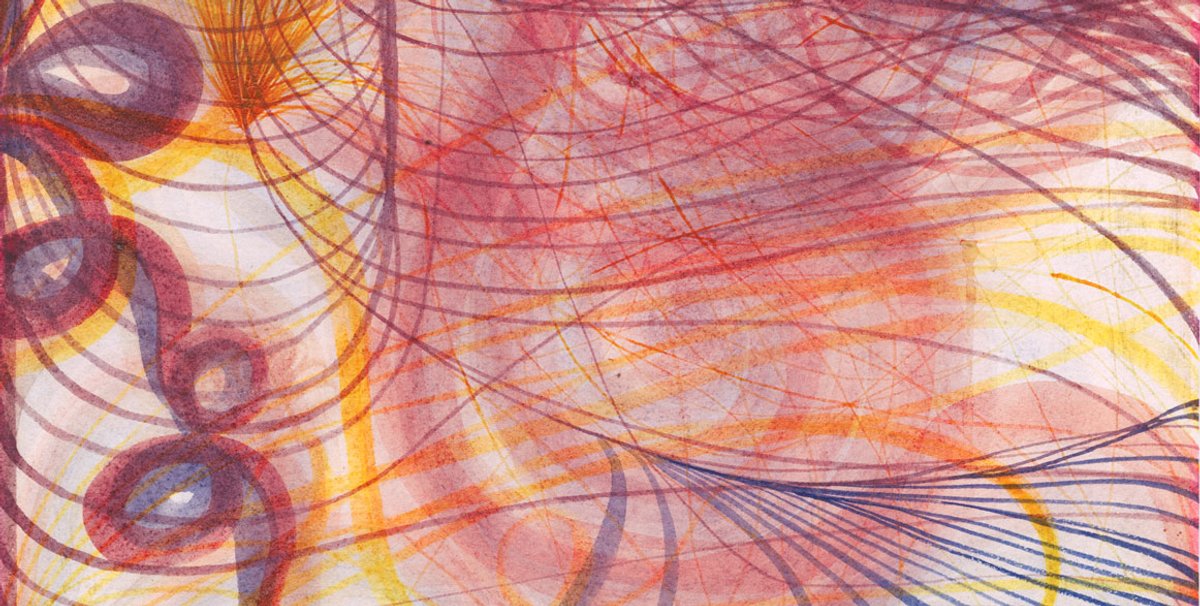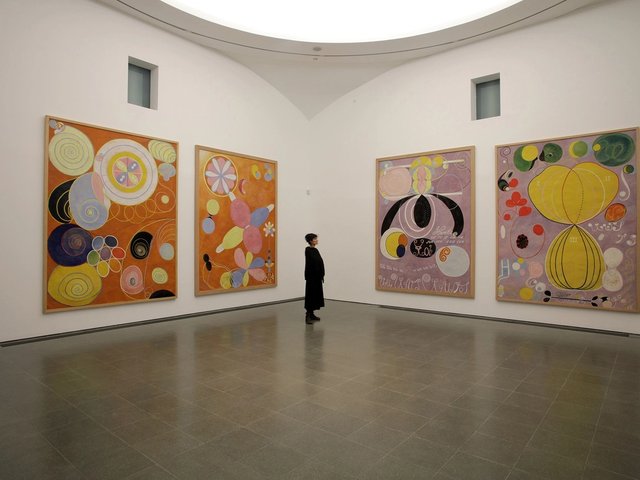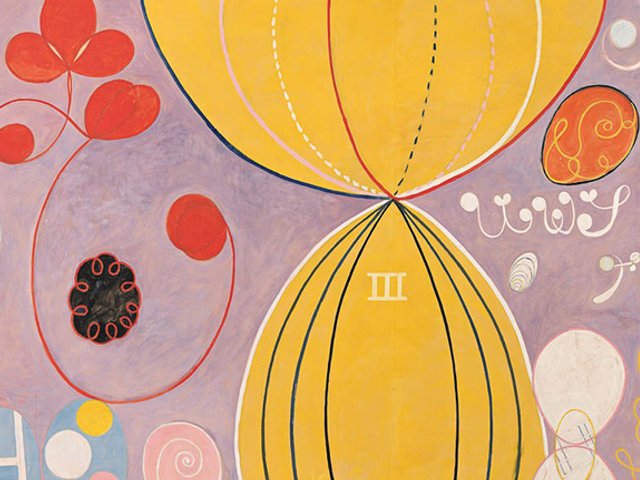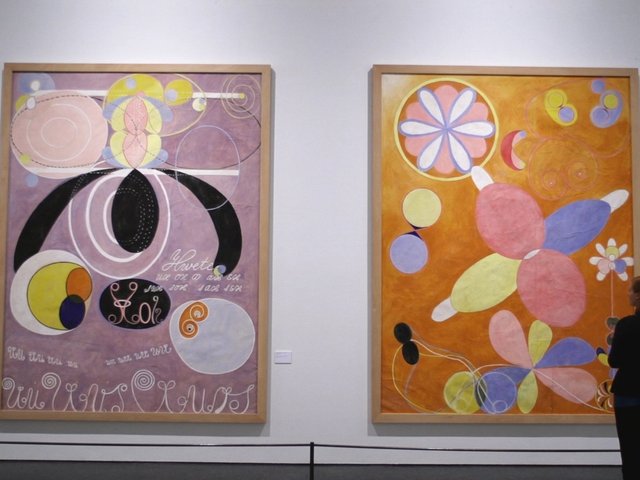The exhibition World Receivers, which closes this weekend at Munich’s Lenbachhaus museum, brings together works by the British artist Georgiana Houghton (1814–84), the Swedish artist Hilma af Klint (1862–1944), and the Swiss artist Emma Kunz (1892–1963). At the end of the 19th and beginning of the 20th centuries, the three artists developed—independently from one another—pioneering abstract forms of art informed by their mutual interest in spiritual and supernatural beliefs, as well as the laws of nature. The works by the female artists have been joined by the films of Harry Smith (1923–91) and the brothers John and James Whitney (1917-95 and 1921-82).
The exhibition’s curators, Karin Althaus and Sebastian Schneider, have picked out five of their favourite works from the show.
• World Receivers, Lenbachhaus, Munich, until 10 March





